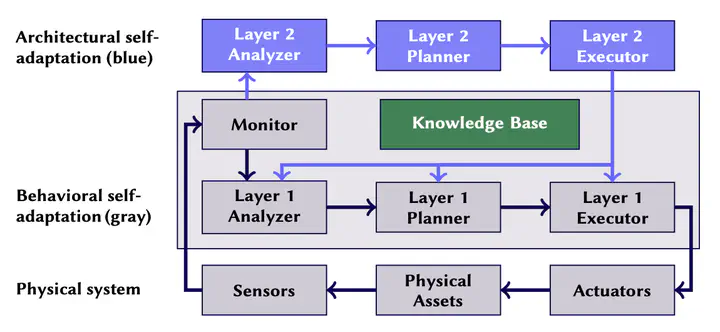
Abstract
Together, a digital twin and its physical counterpart can be seen as a self-adaptive system: the digital twin monitors the physical system, updates its own internal model of the physical system, and adjusts the physical system by means of controllers in order to maintain given requirements. As the physical system shifts between different stages in its lifecycle, these requirements, as well as the associated analyzers and controllers, may need to change. The exact triggers for such shifts in a physical system are often hard to predict, as they may be difficult to describe or even unknown; however, they can generally be observed once they have occurred, in terms of changes in the system behavior. This paper proposes an automated method for self-adaptation in digital twins to address shifts between lifecycle stages in a physical system. Our method is based on declarative descriptions of lifecycle stages for different physical assets and their associated digital twin components. Declarative lifecycle management provides a high-level, flexible method for self-adaptation of the digital twin to reflect disruptive shifts between stages in a physical system